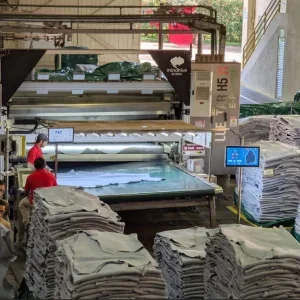Ethiopia is intent on becoming a leather powerhouse, according to one of the sector’s leading voices within the country.
"The industry has a big future," said Yigzaw Assefa, chairman of the Ethiopian Leather Industries Association (ELIA) and CEO of Bahirdar Tannery.
Ethiopia has the largest population of cattle in Africa, and in recent years, the country’s leather industry has attracted many foreign companies to set up factories there. In 2012, for instance, Chinese footwear manufacturer Huajian Group opened a factory at the industrial zone outside Addis Ababa, where it produces 6,000 pairs of shoes and boots a day.
Investing in leather is one of the government’s priorities, and the sector receives incentives including duty exemptions on capital goods and construction materials, as well as free access to US and EU markets, and cheap labour and electricity.
But the big attraction at this point, according to Assefa, is the building up of knowledge and technical expertise.
Ethiopia has exported its leather to Europe and Asia for decades, but Assefa thinks investment in Ethiopia-based factories by foreign companies will help change this trend. Local tanneries, such as Bahirdar, are exploring opportunities to produce shoes, bags and belts for export as well.
Bahirdar primarily produces raw materials for export but it is expanding production with a new plant to produce finished goods for sale abroad too.
"We are constructing the building and training workers," said Assefa. "In the meantime, we are testing the market with a small quantity of fashion gloves and industrial gloves, which have already been accepted in Italy, Russia and the US. We have to change the image we have today – that we only produce raw materials."
In the coming years, Assefa expects to see more investors put money into expanding facilities and establishing more factories. To compete on a global scale, he said investors in Ethiopia should prioritise local talent development.






